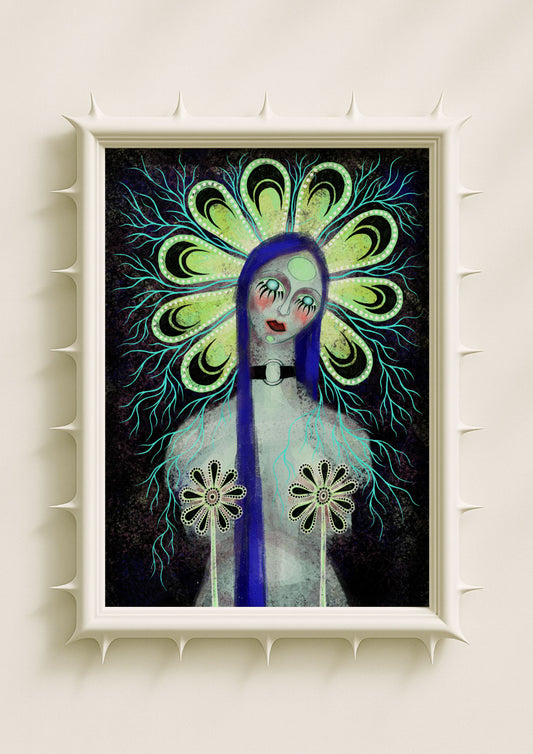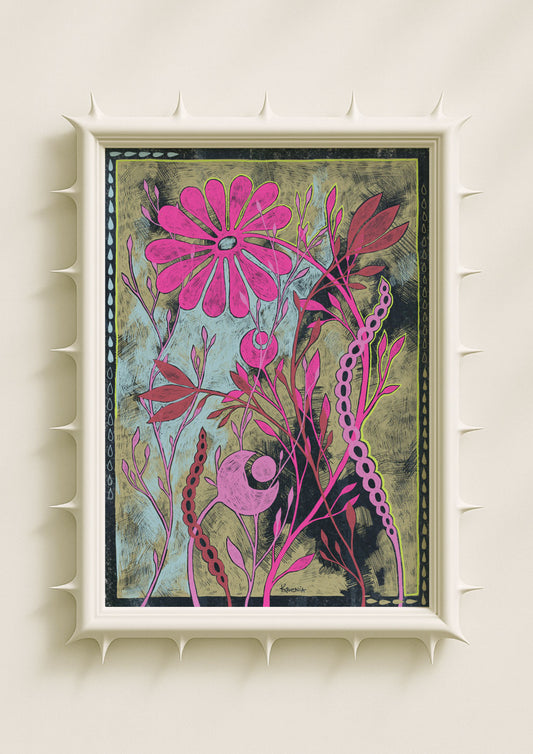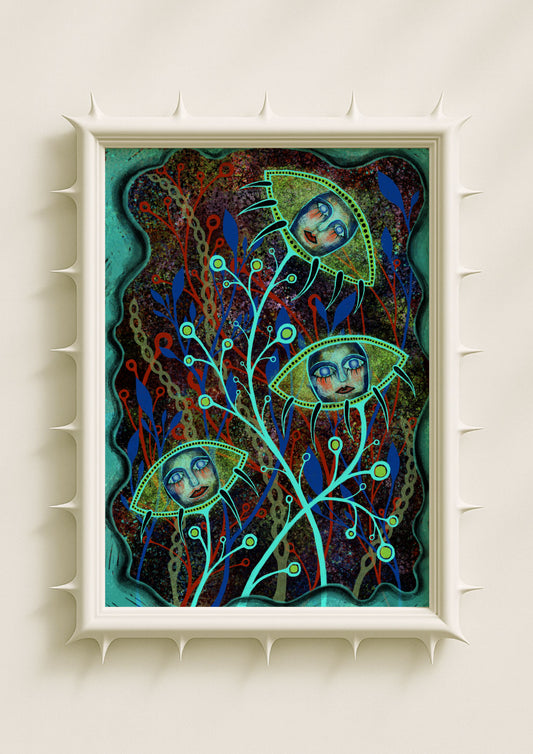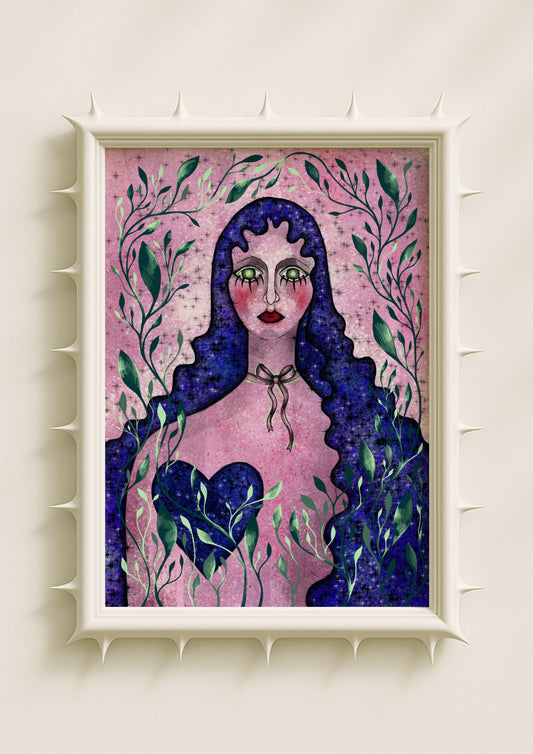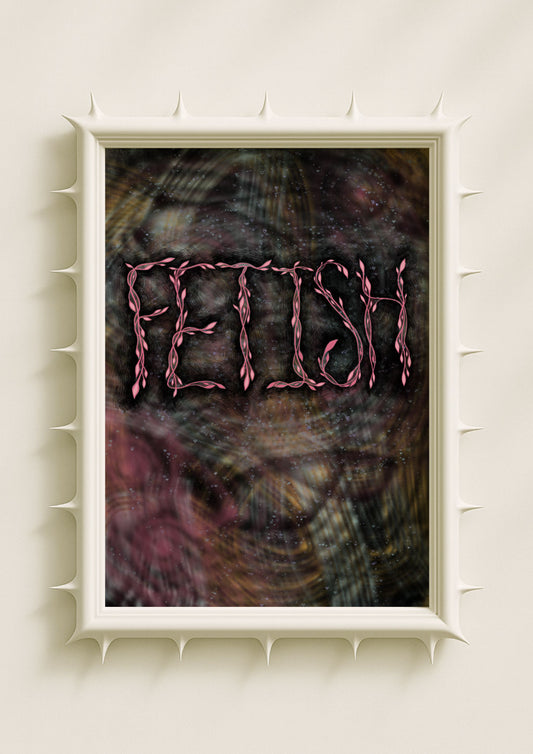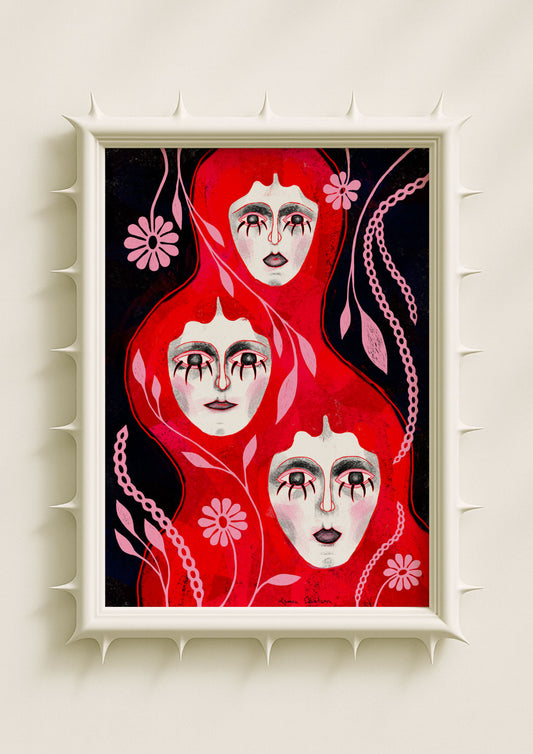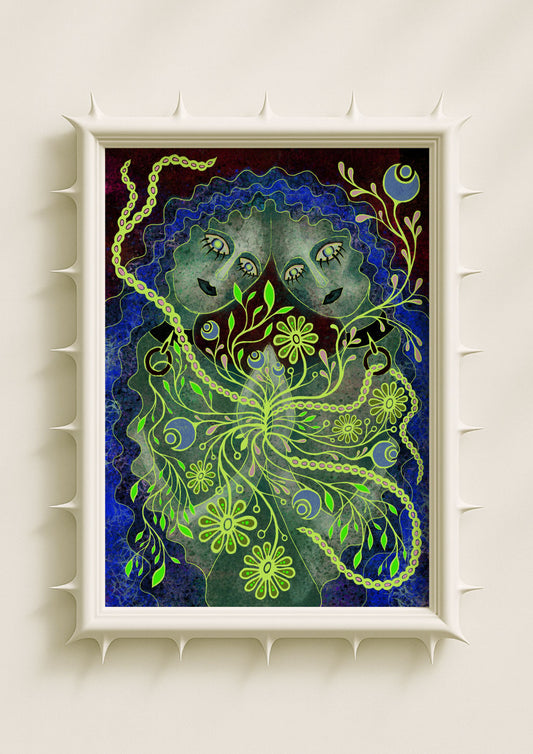The Power of Being Seen, Even by a Painting
A staring figure changes a room instantly. It creates a shift in energy, a sense of presence, almost a quiet conversation between the artwork and the space around it. When I create portraits with intense, steady gazes, I think about what it means to be looked at—not in a confrontational way, but in a way that acknowledges the viewer’s own interior life. These gazes anchor a room because they introduce a form of emotional reciprocity. They watch gently, yet firmly. They don’t let the atmosphere flatten. They bring a pulse.

Why Direct Gaze Feels So Intimate
There is something deeply personal about eye contact, even when it comes from a wall. A face that looks outward invites the viewer inward. It breaks the passive role of décor and becomes part of the emotional architecture of the home. Many of my portraits have eyes that are large, soft, almost liquid in expression. They carry a quiet intensity—not aggression, but awareness. When hung in a home, this awareness creates intimacy. A living room becomes warmer. A bedroom becomes more contemplative. A hallway becomes a place you pause instead of pass through.
Stillness as Emotional Tension
The stillness of a staring figure holds a unique kind of tension. It’s subtle but strong. The figure doesn’t move, but it feels alive. This is why staring portraits work so well in minimalist or structured spaces. They interrupt the smoothness with emotion. They add a human weight to rooms filled with straight lines and cool surfaces. When I draw these faces, I aim for that suspended moment—the one where the viewer isn’t sure if the portrait is observing or reflecting. This ambiguity creates emotional depth.
Surreal Gazes and Symbolic Resonance
In my work, a gaze rarely functions alone. It interacts with the surreal elements around it: botanical shapes that curl like thoughts, mirrored features, elongated eyes, abstract petals blooming out of the face. These motifs act as emotional extensions of the gaze. They turn a simple portrait into a symbolic landscape. The eyes look at you, but the surrounding forms speak for the feelings the face cannot verbalise. On a wall, this creates a layered emotional experience. You’re not just meeting a stare; you’re entering a world.

Why People Feel Drawn to Intense Eyes
People often tell me that the eyes in my portraits “follow them” or “stay with them” throughout the day. This happens because direct gazes activate emotional memory. They echo the human need for connection, empathy and recognition. The viewer feels acknowledged, even in solitude. In a home, this sensation can be grounding. It stabilises a space by adding a focal point that feels alive. Unlike decorative patterns or landscapes, staring figures hold attention without force. They simply exist, and people naturally meet their presence.
Contrast, Shadow and the Pulse Behind the Eyes
The emotional power of a gaze is shaped by contrast. Soft faces framed by dark outlines. Pale skin against shadowed backgrounds. Eyes brightened by surrounding depth. These choices influence how the viewer experiences the portrait. When I reinforce the eyes with shadow, I’m emphasising the inner pulse of the figure. This pulse translates into atmosphere when the piece becomes wall art. A room feels deeper, fuller, more connected to emotion.
The Gaze as a Mirror
One of the reasons staring figures thrive in home décor is that they become mirrors—subtle, emotional mirrors rather than literal ones. The viewer sees themselves in the gaze. Not physically, but psychologically. A portrait with an intense look can reflect back the viewer’s mood, their thoughts, their unspoken feelings. This is why staring figures rarely feel intrusive. They feel empathetic. They hold space.

Presence Without Noise
What I love most about intense-gaze portraits is their quietness. They don’t rely on chaos or bright explosions of colour to create impact. Their presence is still, but full. They make a room feel inhabited even when you are alone. They offer emotional companionship without overwhelming the space.
A staring figure on the wall transforms décor into dialogue. It brings a point of contact. It softens solitude. It adds a steady heartbeat to the atmosphere. And in a world that often feels rushed, that kind of presence becomes its own form of comfort.
